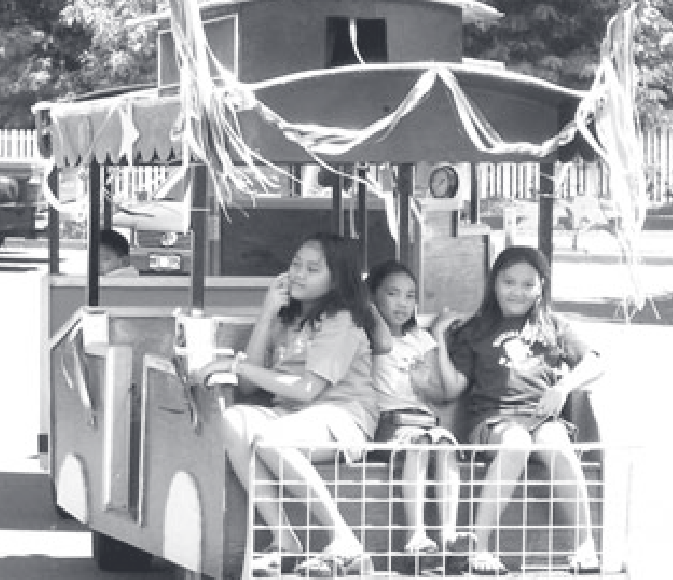
Children’s activities included a train ride sponsored by Kimo Apana, bouncers, and fun games that were sponsored by the Hawaii State Teachers Association and run by HSTA members.
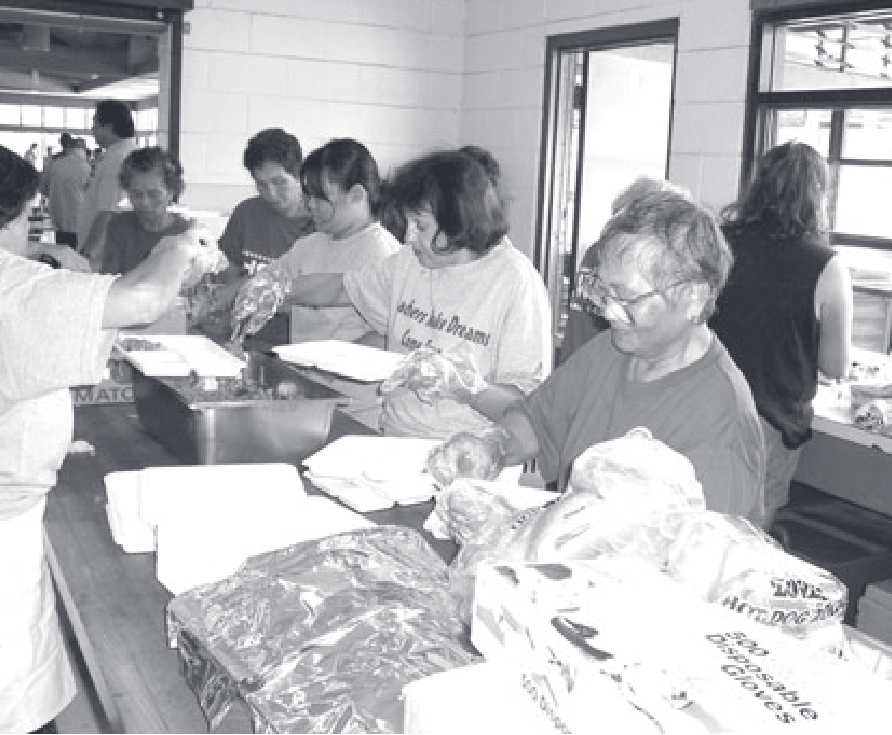
The kitchen crew worked hard to make lunch for 1,000 people.
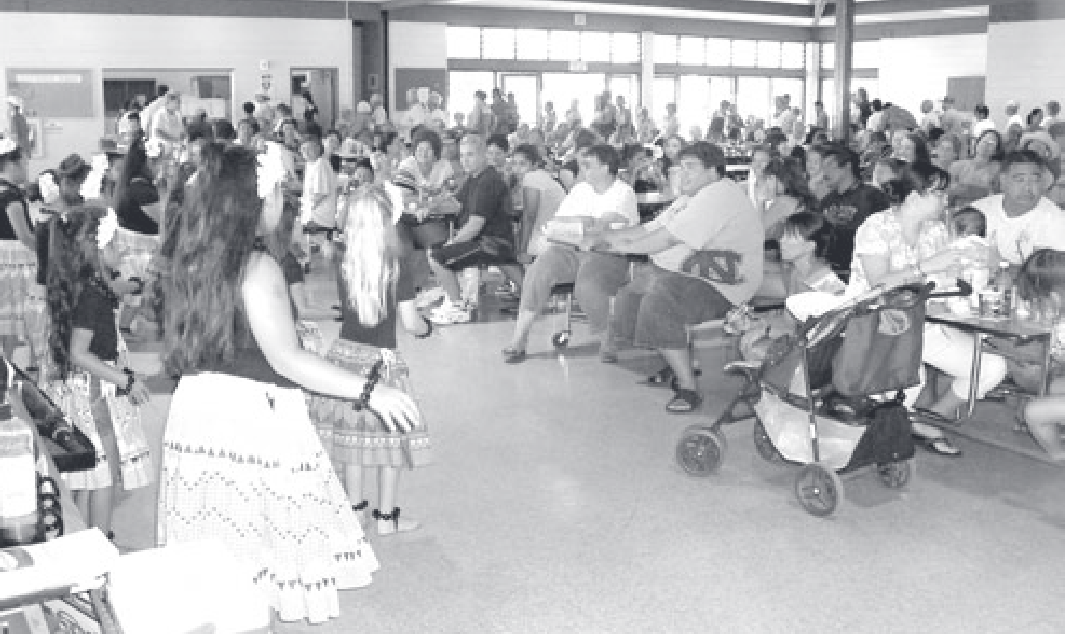 Entertainment was provided by Halau Na Lei Kaumaka O Uka under the direction of kumu hula Napua Graig. Other entertainment included Ron Kualaau, Ernest Puaa, Jarrett Roback and Friends, and Ohana’s. ILWU Vice Chair for Unit 2406 (Maui cement units) Francis Kamakaokalani worked hard to organize the entertainment portion of the program.
Entertainment was provided by Halau Na Lei Kaumaka O Uka under the direction of kumu hula Napua Graig. Other entertainment included Ron Kualaau, Ernest Puaa, Jarrett Roback and Friends, and Ohana’s. ILWU Vice Chair for Unit 2406 (Maui cement units) Francis Kamakaokalani worked hard to organize the entertainment portion of the program.
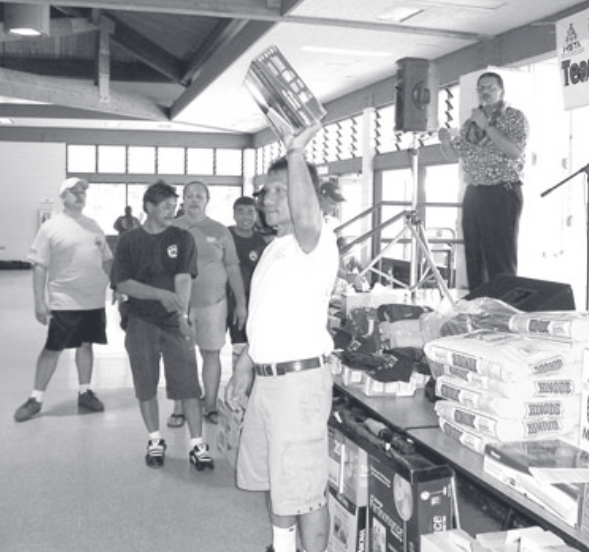
Emcee Michael Victorino (right, with microphone) called lucky numbers for the crowd while ILWU Business Agents Steve Castro, Claro Romero, Jerrybeth DeMello, Wayne Takehara, and Bobby Andrion distributed the prizes.
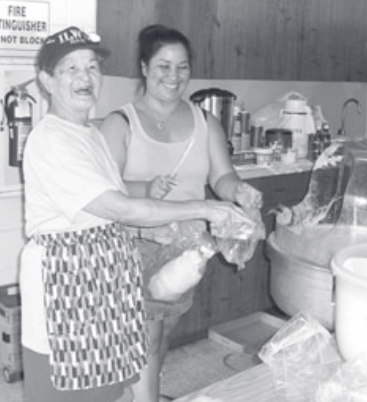
Everyone loves cotton candy! Hotel retiree Sylvia Harima (left) and a helper pass out cotton candy to both children and adults.
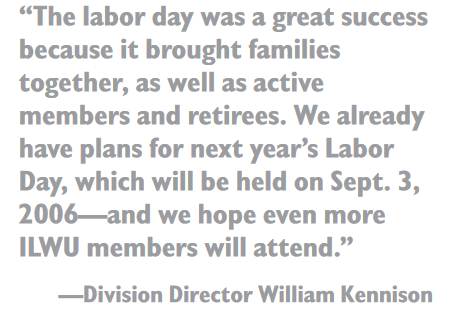
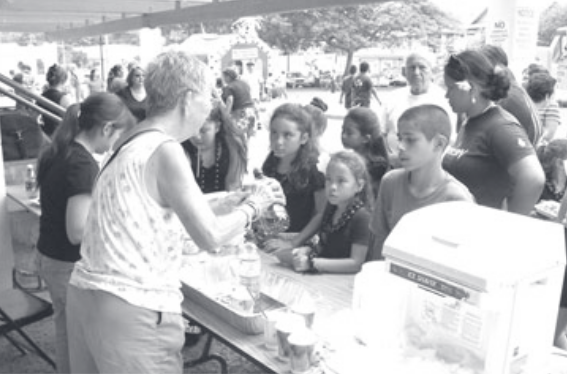
Shaved ice is a popular treat on such a nice, sunny day.
Where did Labor Day come from?
Labor Day is the only holiday created because of the power of organized workers. History tells us that the first Labor Day was organized on Tuesday, September 5, 1882, by the New York City Central Labor Union, an organization of twelve small unions connected with the Knights of Labor. The Central Labor Union put out a call for its members to skip work and instead join a parade through the city to demonstrate the power of organized labor.
September 5 was not a holiday. Workers risked discipline or dismissal for taking the day off, but 10,000 workers joined the parade anyway. They held banners demanding, “Less Work and More Pay” or more radical slogans like,
“To the Workers Should Belong All Wealth,” and “Labor Built This Republic, Labor Shall Rule It.” The parade ended with a picnic for the marchers and their families.
The next year, 20,000 marchers joined the parade organized by the Central Labor Union. It was a huge success and the idea quickly spread to other industrial areas and cities as labor organizations followed the lead set by New York
and organized their own parades and picnics. The first Monday in September became known as Labor Day and the labor movement treated it as a holiday.
As the labor movement grew in strength, unions turned to political action to pressure state and local governments to pass laws declaring Labor Day an official holiday. By 1894, thirty-two states recognized Labor Day as a holiday. The
US government made it a national holiday for federal workers in 1894.
Today, the original meaning and significance of Labor Day is just as important as it was in 1882. Labor Day should be a day for working people to come together with all other working people to demonstrate the unity, strength and spirit
of organized labor. ◆
